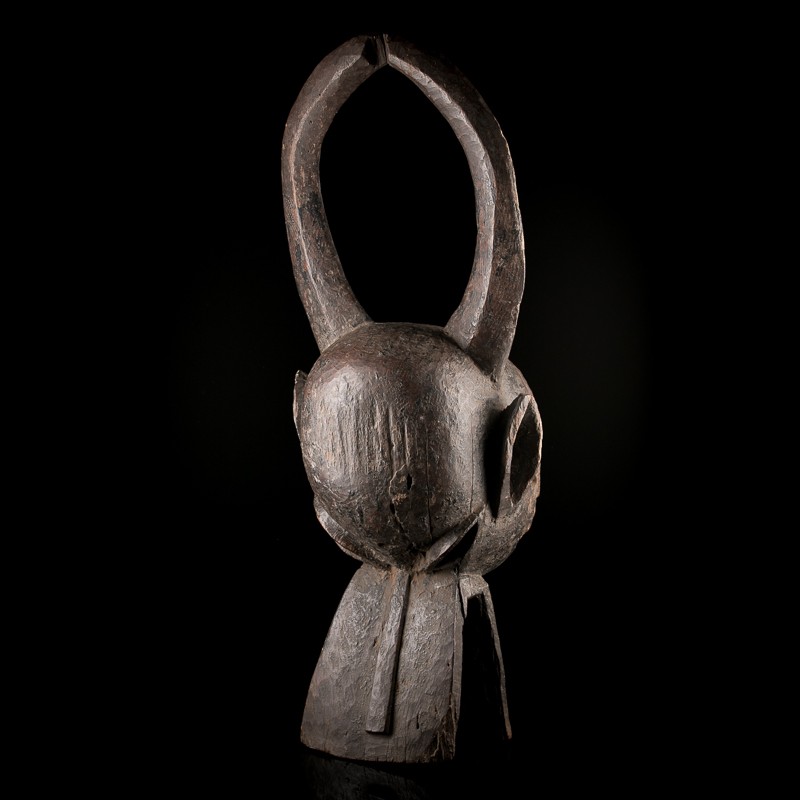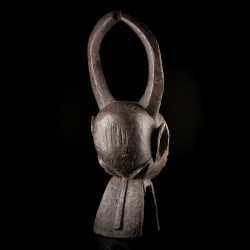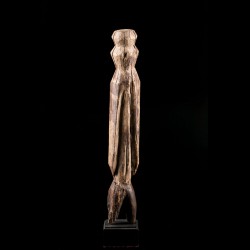





















Imposing African Chamba mask from the village of Yelba in Nigeria. It is a helmet mask representing a spirit of the bush: the buffalo. It bears the name of lang gbadna.
Settled in the Benue region of Nigeria, the Chamba or Tchamba are divided into clans and chiefdoms, each associated with a vara cult of deceased ancestors. The object of worship is the veneration of ancestors, as well as the protective spirit of the bush. The skulls of deceased chiefs are preserved and honored to ensure the well-being, prosperity and fertility of the entire community.
In dances dedicated to the vara cult, masked men come out to mark the funerals of leaders and important members of the cult. The masks also come out as part of the circumcision and initiation rites of young boys and also during the enthronement of new leaders.
Called nam gbalang, lang gbadna, vara, or badna according to the Chamba subgroups, these masks represent the wild and powerful character of the dangerous spirits of the forest.
When not in use, lang gbadna masks are placed in the bush outside the village.
Data sheet
You might also like

Imposing African Chamba mask from the village of Yelba in Nigeria. It is a helmet mask representing a spirit of the bush: the buffalo. It bears the name of lang gbadna.
Settled in the Benue region of Nigeria, the Chamba or Tchamba are divided into clans and chiefdoms, each associated with a vara cult of deceased ancestors. The object of worship is the veneration of ancestors, as well as the protective spirit of the bush. The skulls of deceased chiefs are preserved and honored to ensure the well-being, prosperity and fertility of the entire community.
In dances dedicated to the vara cult, masked men come out to mark the funerals of leaders and important members of the cult. The masks also come out as part of the circumcision and initiation rites of young boys and also during the enthronement of new leaders.
Called nam gbalang, lang gbadna, vara, or badna according to the Chamba subgroups, these masks represent the wild and powerful character of the dangerous spirits of the forest.
When not in use, lang gbadna masks are placed in the bush outside the village.
